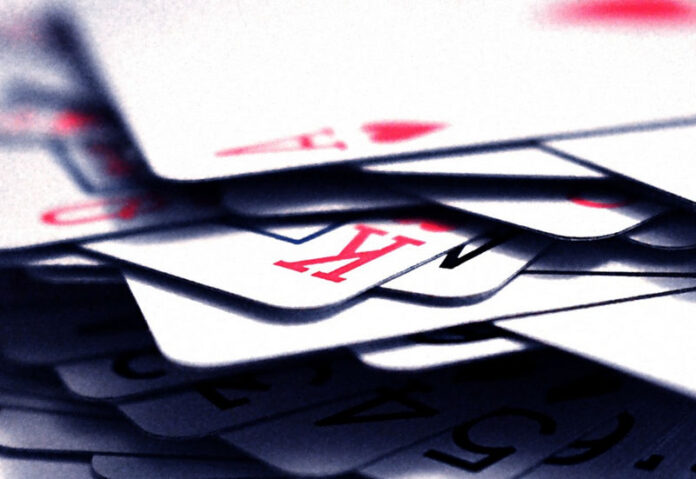Dice control, also known as dice setting or controlled shooting, is a technique employed by some craps players with the goal of influencing the outcome of the dice roll. While it is widely debated whether this technique actually works or not, many craps enthusiasts believe that it can provide an advantage when playing this popular casino game. In this article, we will explore the concept of dice control in craps, its history, the theory behind it, and the strategies that players use to control the dice.
Craps is a dice game played in casinos around the world. It is a game of chance where players place bets on the outcome of the roll of two dice. The outcome of the roll determines whether players win or lose their bets. With such a random element involved, most people perceive craps as purely luck-based. However, some players believe that they can gain a slight edge by controlling the outcome of the dice roll.
History Of Dice Control
The history of dice control in craps dates back several decades. It is believed to have originated in the 1950s when dice control was first introduced by a craps player named “The Captain,” who claimed to have mastered the technique and consistently won big at various casinos. The Captain and his team of controlled shooters were an inspiration for many craps enthusiasts who saw an opportunity to tilt the odds in their favor.
Dice control is based on the concept that if a shooter can manipulate the dice in a specific way, they can increase the chances of rolling certain numbers while reducing the likelihood of rolling others. While this concept may sound simple, achieving a consistent control over the outcome of the dice roll is a challenging undertaking.
How Dice Setting Works
The theory behind dice control revolves around a few key elements. The first is the notion of “axis control.” Axis control refers to the ability to set the dice in such a way that a particular axis is favored to remain stable during the roll. By minimizing unwanted movement of the dice, controlled shooters aim to influence the outcome.
Another key element is the “grip.” The grip refers to how the shooter holds the dice, with different grip techniques said to produce different results. Popular grips include the three-finger front grip, the two-finger front grip, and the stacked grip. Each grip has its own advantages and disadvantages, and players often experiment to find the one that works best for them.
Apart from the grip, controlled shooters pay close attention to their throwing technique. They strive to achieve a consistent throwing motion, aiming to replicate the same roll each time. This involves practicing and refining their throwing technique to achieve a controlled and repeatable outcome.
Dice set is another important aspect of dice control. Dice set refers to the arrangement of the dice before the shooter throws them. By setting the dice in a certain way, controlled shooters believe they can manipulate the outcome by reducing the chances of undesired rolls and increasing the likelihood of desired ones.
The Dice Used In Craps
There are several popular dice sets used in craps, each allegedly offering a different advantage. Some common sets include the 3-V set, the 2-V set, the hardway set, and the sixes set. Each of these dice sets has its own objectives, such as increasing the chances of rolling certain numbers or reducing the chances of rolling others.
One of the most controversial aspects of dice control in craps is whether it actually works. The debate is split, with some players swearing by it and others dismissing it as a myth. Various studies have been conducted to analyze the effectiveness of dice control, but the results have been inconclusive. The skeptical camp argues that the randomness of dice rolls makes it impossible to consistently control the outcome, no matter how skilled the shooter.
Proponents of dice control, on the other hand, claim that with enough practice and skill, it is possible to gain a slight edge. They argue that controlled shooting can help reduce the frequency of 7 outs (when the shooter rolls a seven after the point has been established), increase the number of successful passes (when the shooter rolls the point before rolling a seven), or increase the chances of specific numbers being rolled.
To strengthen their argument, controlled shooters often cite their personal experiences of consistent winning sessions or share stories of their successes. However, personal anecdotes alone are not sufficient evidence to prove the effectiveness of dice control.
Casinos, for their part, remain skeptical of dice control. Many casinos consider dice control to be a form of advantage play and prohibit or closely monitor players who attempt to use it. They argue that the randomness of the game is what makes craps fair and removing that element would disrupt the integrity of the game. As a result, they employ various countermeasures to deter controlled shooters, such as using specially designed dice, changing dice after each shooter, or placing betting limits on players suspected of using the technique.
Do Casinos Believe It Works?
While there may not be a consensus on whether dice control is truly effective or not, it is clear that many craps players find enjoyment and excitement in practicing and attempting to master this technique. For those interested in exploring dice control, it is important to approach it with a realistic mindset. Even if it does provide a slight edge, it will require countless hours of practice, dedication, and discipline to achieve any tangible results.
If you are intrigued by dice control and wish to give it a try, there are several steps you can take to improve your chances of success. Firstly, educate yourself about the techniques and theories behind dice control. There are numerous books, videos, and online resources available that delve into the intricacies of the technique. Learning from experienced controlled shooters can provide valuable insights and tips.
The next step is to practice. Start by familiarizing yourself with different dice grips and sets, and experiment to find the ones that work best for you. Set aside dedicated practice sessions to refine your throwing technique and strive for consistency. The more you practice, the better you will become at controlling the outcome of the dice roll.
It is important to note that practicing dice control should not be limited to the comfortable environment of your own home. Take your skills to a casino and test them in a real game environment. Playing in live casino games will expose you to the pressures and distractions that come with playing in a crowded and fast-paced setting. This experience is crucial to gaining confidence and understanding how dice control holds up under real-world conditions.
The Basics of Getting Started
Remember, however, that while practicing dice control, you should still approach craps with a realistic mindset. It is always wise to set a budget and stick to it. Craps is known as a game with a high house edge, which means that even with the best dice control skills, the casino will always have a statistical advantage. Treat dice control as a way to enhance your entertainment and gaming experience rather than a guaranteed pathway to winning.
Conclusion
In conclusion, dice control in craps remains a topic of debate among players and experts. While some players believe that with enough skill and practice, they can influence the outcome of the dice roll, others view it as nothing but a myth or a product of wishful thinking. The ability to control the outcome of the roll is a challenging skill that requires countless hours of practice and dedication. While it may provide a slight advantage for some, it is essential to approach dice control with a realistic mindset and remember that the casino always has the edge in the long run. Whether or not dice control truly works, it continues to fascinate craps players and adds an extra level of excitement and challenge to the game.















